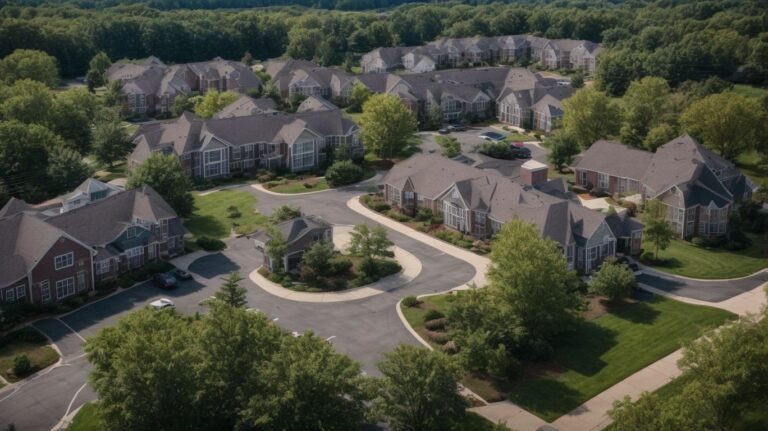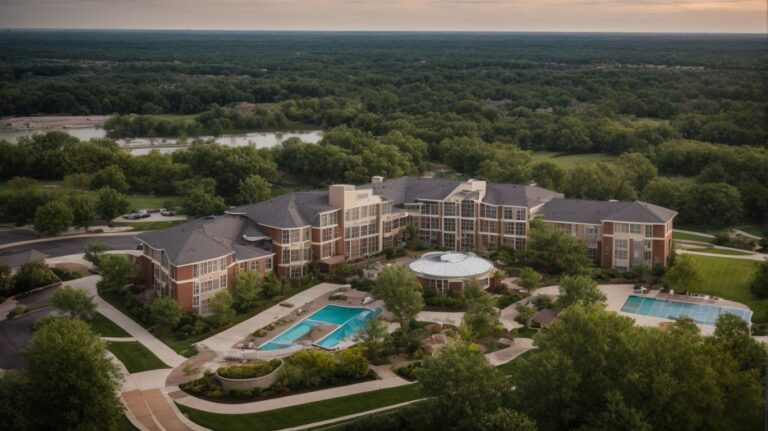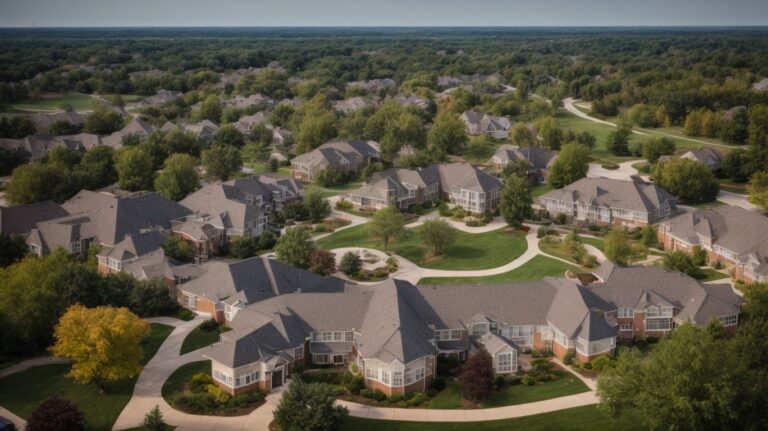How To Find A Retirement Community?
Key Takeaway:
- Location and proximity to family and amenities are important factors to consider when looking for a retirement community. It’s important to choose a community that is conveniently located and offers easy access to healthcare and other necessary services.
- The type of community, whether age-restricted or assisted living, should also be considered. Understanding the available options and which one fits your needs can help you choose the best community for your retirement lifestyle.
- Cost and financial planning are crucial when making a decision about a retirement community. Understanding the fees associated with the community and developing a financial plan can help ensure that you are able to afford and sustain your retirement lifestyle.
- Researching and visiting potential communities, talking to current residents and staff, and understanding the contract and legal obligations are all important steps to take before making a decision about a retirement community. These steps can help you make an informed decision and ensure a smooth transition into a new community.
- Preparing for the move and downsizing, as well as adjusting to life in a retirement community, are also important steps in the decision-making process. By understanding the challenges associated with transitioning into a retirement community and taking steps to prepare, you can make the process smoother and more enjoyable.
Are you worried about finding a safe and secure retirement community? You’re not alone. Discover how to find the perfect retirement community for you and your family with this comprehensive guide.
Factors to consider when looking for a retirement community
When in search of a retirement community, look at aspects such as:
- Area
- Closeness
- Kind of community
- Expenses
- Health care services
Think about why each one is vital to make a knowledgeable choice concerning your retirement home.
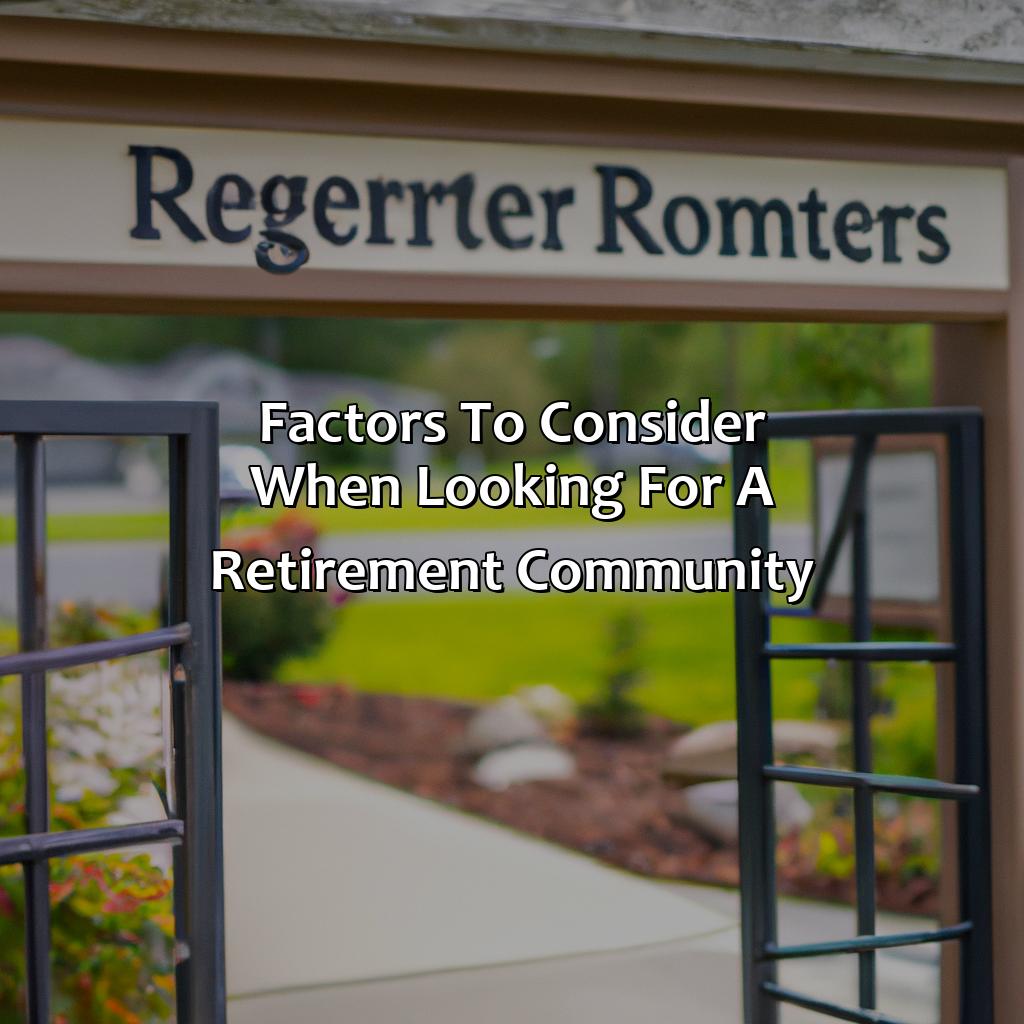
Image credits: retiregenz.com by David Arnold
Location and proximity to family and amenities
The location of a retirement community is an essential aspect to consider. It influences the availability of amenities, proximity to family, and opportunities for socializing. Choose a community that suits your lifestyle and is located in a safe environment near important amenities such as healthcare facilities, shopping centers, transportation systems, recreation centers and places of worship.
Moreover, ensure that it is easy to access public and private transport systems for easy transportation when needed. A well-located community will also bring you closer to opportunities that would be beneficial in your retirement life such as volunteer opportunities or classes or clubs that you can take part in.
It’s wise to consider the history of the location before making your choice. Consider if it’s prone to natural disasters such as floods or earthquakes. Historical knowledge helps prevent stress by preparing oneself and finding solutions beforehand.
Retirement communities come in all shapes and sizes, just like the retirees themselves – some need a bit of assistance, while others are still partying like it’s 1969.
Type of community (age-restricted, assisted living, etc.)
Retirement Living Options for Active Adults:
Determining the type of retirement community to live in is a major decision that requires careful consideration. From age-restricted communities to assisted living and beyond, there are several options available. Here’s what you should know before you make a choice:
| Community Type | Description |
| Active Adult Communities (AACs) | AACs are age-restricted and cater to active and independent seniors. |
| Continuing Care Retirement Communities (CCRCs) | A comprehensive senior living option that provides various levels of care – from independent living to skilled nursing care. |
| Assisted Living Facilities (ALFs) | An ideal option for seniors who require help with activities of daily living but still want some independence or privacy. |
In addition to choosing the right type of community, it’s important to consider factors such as location, amenities, cost, and services offered. This will ensure a comfortable and enjoyable living experience.
And most significantly, remember that retirement living options are as unique as individuals who select them. What works well for one retiree may not be suitable for another.
A recent resident at an ALF shared how beneficial the community has been for her overall wellbeing. She appreciated how compassionate the staff was toward her and how easy it was to maintain her comfort level while still receiving the necessary assistance when required.
Retirement communities, where the price tag is higher than your cholesterol levels.
Cost and financial planning
When evaluating retirement communities, it’s essential to consider financial planning and costs. Here are some key points to consider:
| Expense | Description |
| Entry fees | This is a one-time payment made at the beginning of your entry into the community. These fees can vary considerably among different retirement communities. |
| Monthly Fees | This covers your living expenses, such as meals, utilities, housekeeping, maintenance, and activities. This is often the largest expense when considering a retirement community. |
| Medical Expenses | Many retirement communities offer on-site medical care or have arrangements with nearby healthcare providers. When choosing a community make sure you consider the expected cost of medical expenses. |
| Care Plans available | You might need additional care support in the future like Assisted Living services and there might be an extra charge for each type of service |
| Lifestyle Activities/Events fees-Whether any events or programs that will incur additional charges? | It is worth considering this while looking for a retirement community |
| Taxes: | The tax might vary depending on state law. Some states have laws that waive taxes if certain conditions are met so it is always good to know state authority policies on taxes related to senior citizens. |
When it comes to affordability and cost considerations, there are several unique things to think about before joining a particular community. These include location considerations, age requirements or restrictions for eligibility regarding qualifications.
Suppose you’re not familiar with where you want to go when sorting through your possibilities. In that case, it helps to talk to the locals and current inhabitants of the community you’re considering. They will provide valuable insights into their experiences, including financing, living arrangements, healthcare access, and availability.
A close friend recently investigated her options for a retirement community with an emphasis on fulfilling her active lifestyle. She shared that after comparing costs between various communities and factoring in additional expenses such as transportation and meals, she found a location that was affordable without compromising the quality of life that she desired.
You know you’re in a retirement community when the only excitement left is comparing medication schedules.
Health care services and facilities
Senior citizens seeking suitable housing options should prioritize the accessibility of medical assistance and facilities. Retirement communities with reliable health care resources, including in-house nursing staff and onsite medical consultations, provide comprehensive protection against emergencies or unexpected health concerns. In addition, retirees must evaluate the availability and range of services, such as rehabilitation therapies, appointment scheduling, and transportation to hospitals or clinics.
Furthermore, retiree’s safety is essential when selecting a retirement community. With assisted living options available, senior citizens can receive regular check-ins by caretakers to ensure their welfare. Moreover, choosing a campus equipped with 24-hour emergency response systems will enhance security among seniors.
Retirement communities that offer on-site fitness centers, wellness programs, and healthy meal options contribute to residents’ overall wellbeing. Additionally, social networks and events make it easier for new residents to feel welcome and engaged within the community.
According to a report submitted by National Healthcare Association (NHA), retirement communities have a positive impact on both physical and emotional health outcomes among seniors.
If you’re considering a retirement community, make sure to take these steps before signing on the dotted line – trust us, you don’t want to end up in a bingo-only neighborhood.
Steps to take before making a decision
Research and collect info to make an educated decision on retirement communities. Visit and tour the prospectives. Speak to present residents and staff. These steps will answer all your questions.
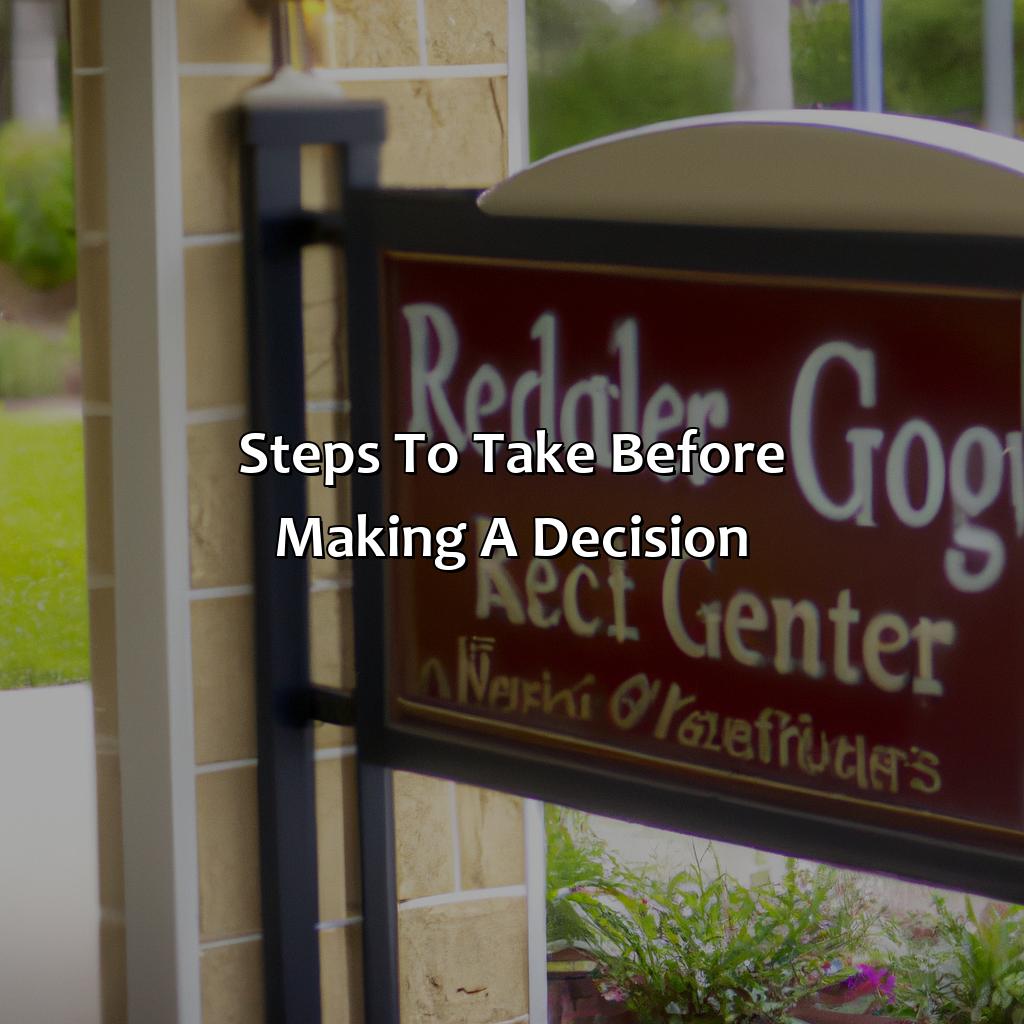
Image credits: retiregenz.com by Adam Arnold
Research and gather information
One of the crucial steps to be taken before choosing a retirement community is to carry out comprehensive research and gather essential information. This will enable you to make an informed decision about what’s best for you in terms of location, amenities, cost, availability of health care services, and lifestyle options.
It’s advisable to start by looking at various retirement communities on the internet and reading their reviews. Check if they have a website where you can obtain detailed information about their services. Furthermore, seek recommendations from friends or family members who might have knowledge about the best communities available.
Another effective way to gather information is to attend events thrown by different retirement communities. Be sure to ask questions regarding everything that matters and take note of the responses given by representatives.
Moreover, it is vital to visit prospective communities in person for a more comprehensive understanding of their services, environment, culture and activities provided. During your visit, get acquainted with both staff members and current residents. Ask varying questions ranging from amenities offered down to cost implications as this will help guide your decision-making process effectively.
Based on gathered information, a suggestion includes seeking guidance from professional long-term elder care advisors who possess extensive knowledge and experience in helping people find suitable communities. They can assist in navigating potential challenges by providing necessary information while considering affordability factors that are tailored made specifically for seniors’ unique preferences and needs.
Get a sneak peek of your potential future by touring retirement communities – there’s no harm in trying, unless you count accidentally stealing someone’s walker as harm.
Visit and tour potential communities
To explore potential retirement communities before making a final decision, taking a physical tour is essential.
Here is a 5-step guide to get the most out of your visit to prospective retirement communities:
- Make an appointment: To ensure that you have someone available to show you around and answer any questions, always call first and set an appointment time for your visit.
- Observe: Take in everything. Look beyond the decor and look into how well maintained the community is and whether it has all the facilities and amenities it claims.
- Talk to residents: During your tour, strike up conversations with existing residents (if possible). They will give you invaluable insights into what life at the community would be like, such as daily routines, meal plans, social activities etc.
- Meet Staff Members: Engage with staff members throughout your visit. Discuss things like styles of communication and their availability in case an emergency arises in the future.
- Ask Questions: Come prepared with a list of questions that are important to you. This includes details about costs, insurance requirements, and any additional fees beyond residency fees.
It’s also crucial to note if the area is easy enough for friends or family members to come by or if transportation might be required.
When exploring options of potential communities during your tour, be on the lookout for unique selling points that set them apart from other compatible alternatives.
Finally, when comparing different communities make sure to take notes or photos during each visit. It will help keep track of important differences which can influence decision-making later on.
Talking to current residents and staff is like reading the Yelp reviews of a retirement community, but with actual faces and voices attached.
Talk to current residents and staff
Engage with those living in the retirement community and staff members to get a sense of what life is like at the facility. Gather information about daily routines, activities, and services provided. Listen carefully to their feedback on both positive aspects of the community and areas that could be improved.
It is useful to ask open-ended questions that encourage detailed responses rather than simple yes or no answers. For example, “What do you enjoy most about living in this retirement community?” leads to a more informative response than “Do you like living here?“
By having conversations with staff members and residents, potential residents can get an accurate feel for whether this particular community is right for them based on their lifestyle preferences and needs.
Don’t miss out on the opportunity to gain valuable insights by connecting with current residents and staff members before making a decision about moving into a retirement community. Reach out today and take advantage of this vital resource.
Don’t worry, the retirement community will have a nurse on call 24/7… just in case you party too hard.
Making the decision and transitioning
Movin’ into retirement? Here’s what you need to know!
- Understand the contract and legal obligations
- Get ready for that move: downsize and pack up.
- Finally, adjust to life in a retirement community – no problems!
These sub-sections provide you with the tools for an easy transition.
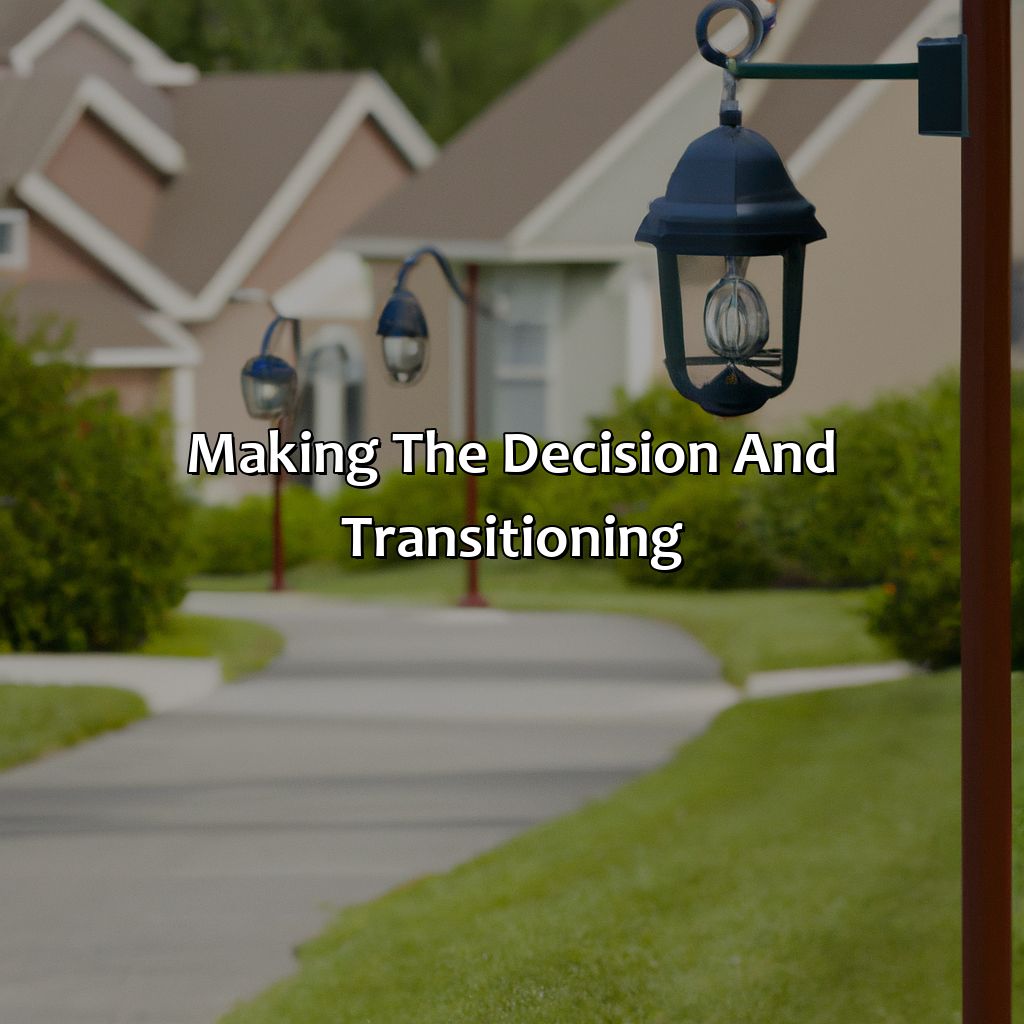
Image credits: retiregenz.com by David Arnold
Understanding the contract and legal obligations
As one navigates their way through the process of considering and transitioning to a retirement community, it is crucial to have a clear understanding of the legal contract and obligations involved. The contractual terms should be reviewed in detail before making any commitments or signing documents, especially regarding fees, services, and amenities provided by the community.
It is also important to take note of the legal obligations that come with residing in a retirement community. These may include state regulations for senior living facilities, health care guidelines, and safety standards. It is recommended that one seeks professional guidance from an attorney experienced in elder law to ensure that these obligations are thoroughly understood and adhered to.
In addition, some communities may require certain financial disclosures or assessments before allowing individuals to become residents. These requirements vary depending on the community’s policies and location.
A study by AARP found that about 90% of people over age 65 want to stay in their homes as they age, but some might explore other options such as retirement communities.
Good news: downsizing means you’ll finally have an excuse for getting rid of those hideous decorative plates your mother-in-law gave you.
Preparing for the move and downsizing
As you plan for retirement, finding an appropriate community can be a challenge. Part of this process involves downsizing your possessions and purging unwanted items to prepare for the move.
To effectively prepare for the move and downsizing, follow these three steps:
- Start by sorting through your belongings and deciding which items are essential and necessary for daily life.
- Sell or donate unwanted items to free up space while minimizing clutter.
- Consider hiring professional movers to assist with packing and transportation to avoid unnecessary stress.
It is essential to consider unique aspects of each community you are interested in, such as activities offered, amenities available, and healthcare services provided.
According to AARP, nearly 90% of adults want to age in place, but it may be beneficial to consider a retirement community for an increased sense of safety and social engagement.
Remember these steps as you transition into your new community and enjoy the comforts that come with a well-planned retirement.
Adjusting to life in a retirement community
Adjusting to the Lifestyle in a Retirement Community
Entering retirement can be an intimidating yet exciting time in one’s life, and finding a suitable retirement community for your needs is essential. Being able to adjust to the new lifestyle in the community is equally crucial. The transition can be made simpler by maintaining an open mind and actively engaging with other residents.
In such communities, activities are always available for socializing and participating amongst the retirees who share similar interests. Integrating into activities such as exercise or games can foster connections and build relationships within the community.
Adapting to new surroundings can be challenging, but concentrating on all that the retirement community offers – such as services like housekeeping or transportation – can make life significantly easier. Becoming accustomed to following its schedule instead of yours might take some time, but it will eventually lead to long-term success.
It is vital to experience what each community has to offer since not all will be alike. It would make sense to research them and even visit in-person before fully committing to any specific retirement communities. By being financially aware of each’s costs or overall atmosphere, it enables retirees with peace of mind when adjusting from home mortgages.
Overall, adjusting to retired life at a senior living facility may seem daunting at first glance but staying positive and open minded towards change can immensely improve this transition period succeeding long-term satisfaction within the community.
Five Facts About How to Find a Retirement Community:
Research the location and amenities of the retirement community. (Source: AARP)
Visit the community and talk to current residents to get a sense of the atmosphere and lifestyle. (Source: U.S. News & World Report)
Consider the cost and financial options, such as monthly fees and contracts. (Source: Consumer Reports)
Look for a community with resources for health care and assistance with daily living, such as medical staff and transportation services. (Source: Senior Living)
Check the community’s reputation and track record by researching online reviews and consulting with state and local government agencies. (Source: The Balance)
FAQs about How To Find A Retirement Community?
How do I begin my search for a retirement community?
When searching for a retirement community, it’s important to start by identifying what’s most important to you. Begin by considering factors such as location, amenities, cost, and level of care needed. You can also research online, ask friends and family for recommendations, and visit potential communities in person to get a feel for the environment.
What types of retirement communities are available?
There are several types of retirement communities available, including independent living communities, assisted living communities, skilled nursing facilities, and continuing care retirement communities. Each type offers varying levels of care and services, so it’s important to carefully consider your needs and preferences before making a decision.
What should I look for during a tour of a retirement community?
During a tour of a retirement community, be sure to look for cleanliness, safety measures, and overall atmosphere. Ask about the available amenities, such as fitness facilities, dining options, and social events. You may also want to speak with current residents to get a sense of their experiences living in the community.
How can I ensure that a retirement community is safe and secure?
When searching for a retirement community, safety and security should be a top priority. Look for communities that have security measures such as cameras, secure entrances, and on-site staff. You can also check with state and local agencies to ensure that the community has proper licensing and meets safety requirements.
What are the costs associated with living in a retirement community?
Costs can vary widely depending on the type of community and level of care needed. Some communities require an entrance fee, while others have a monthly rental fee. You may also need to pay for additional services and amenities. It’s important to carefully review the costs and fees associated with each community before making a decision.
What if I change my mind after moving into a retirement community?
If you find that a retirement community isn’t the right fit for you, most communities will allow you to move out with reasonable notice. Be sure to review your contract and speak with community staff about any potential fees or penalties for breaking the agreement.
 Checkout this IRS Loophole
Checkout this IRS Loophole 


